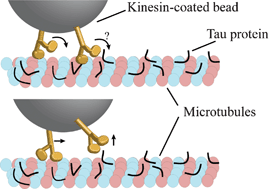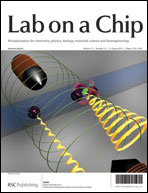Biosensing MAPs as “roadblocks”: kinesin-based functional analysis of tau protein isoforms and mutants using suspended microtubules (sMTs)†
Abstract
The concept of a reconstructed microtubule kinesin-based transport system was originally introduced for studies of underlying biophysical mechanisms of intracellular transport and its potential applications in bioengineering at micro- and nanoscale levels. However, several technically challenging shortcomings prohibit its use in practical applications. One of them is the propensity of microtubules to bind various


 Please wait while we load your content...
Please wait while we load your content...